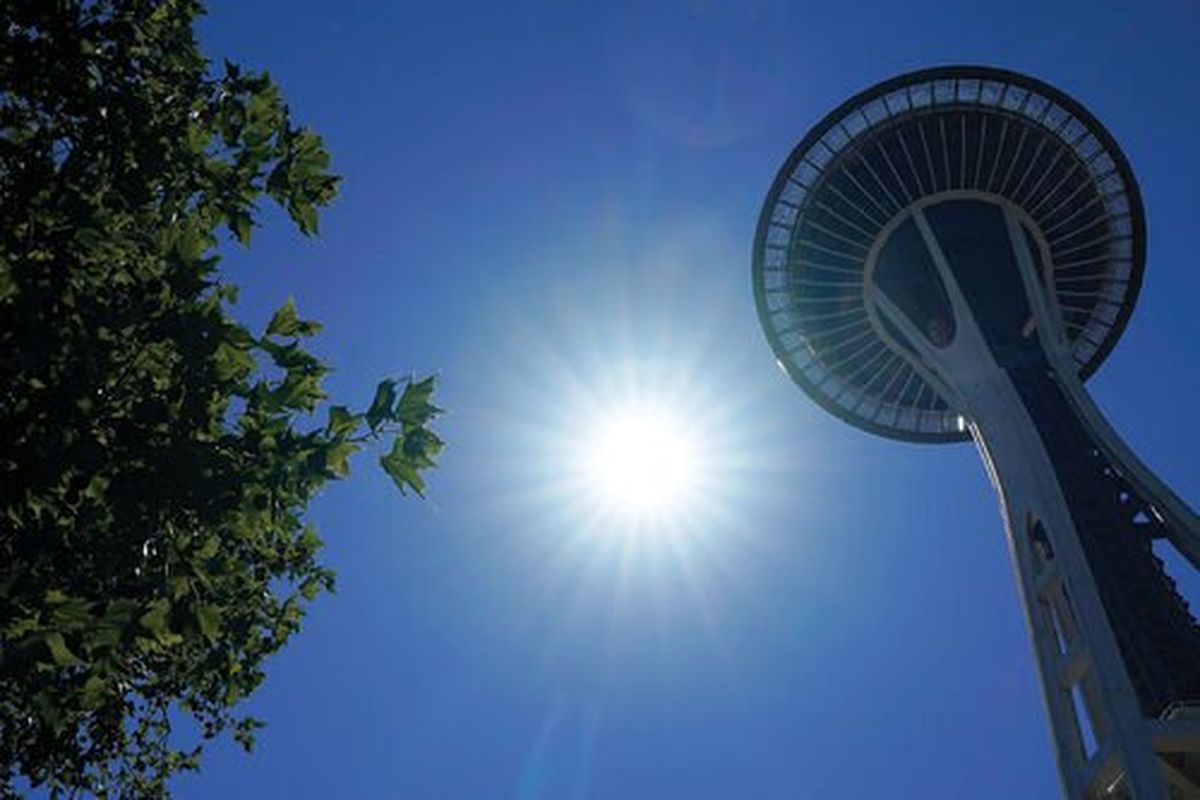Space Needle remains a top draw 60 years later

SEATTLE – Even on a cloudy April morning, dozens of tourists make the trip to the top of the Space Needle. Families take in sights of downtown skyscrapers rising above them, ferries and cargo ships plowing across the Puget Sound and distant mountain ranges fairly visible through the clouds – often pausing to take sky-high selfies.
For 60 years the structure has been the emblem of the city’s skyline, a monument to science and exploration.
The Space Needle opened its doors to the public on April 21, 1962 as the centerpiece of Seattle’s Century 21 Exposition. At the time, the Cold War was a large part of the public consciousness. When the Soviet Union launched Sputnik I in 1957, the United States became worried about its ability to compete in the race to space.
According to the University of Washington’s Center for the study of the Pacific Northwest, Americans wanted to respond “in ways that reassured the nation and the world that the United States was not really ‘behind’ the Soviet Union in the realms of science and space.”
The exposition became an opportunity to build confidence in the country’s standing in the field of science. Exhibitions focused on developing technologies, the mysteries of outer space and the world of the future. At the heart of the fair was the intersection of all those ideas: the Space Needle.
“The concept was basically like an Eiffel Tower for the space age,” said Randy Coté, director of marketing and business development for the Space Needle. “It’s a steel tower with a UFO on top, so to speak – this sort of vision of the future and innovative design. People had never seen a building that looked like this before.”
Even though the concept appeared to be out of this world, people at the time knew the building would have an enduring impact on the city.
“After the fair is history, the Space Needle will remain as a lasting landmark for Seattle,” the Seattle Times declared in a preview of the event.
Today, more than a million people visit the Space Needle every year, coming from all over the world to visit the city and see the landmark.
A $100 million renovation in 2018 replaced the observation deck’s fencing with large glass panes, opened up a lower level with the world’s only revolving glass floor and made other improvements to make the building and its views of Seattle more accessible and interactive.
Melissa Kessler and her children, all residents of the area, took her parents who were visiting from San Antonio, Texas, to the top of the Space Needle last week. The view was “better here than from the Tower of the Americas in San Antonio,” Kessler said.
Kessler’s children, Ellie and Easton had differing opinions of the experience. Ellie was a bit scared, while Easton had been waiting to go up to the top ever since they moved to the area.
Kessler’s father, Larry Faulk, a long time construction worker, said the vantage point gave him a look at how Seattle was built. Kessler’s mother, Gail Faulk, recalled hearing about the Space Needle’s development during her time in high school.
“We’re very excited to be here and have been wanting to come here for a long time,” Gail Faulk said.
Rose Orozco came to the Space Needle from Vallejo, California with two of her friends. She said the building’s architecture lives up to its name simply because “it looks like a spaceship.” Any time she visits the area with others, she includes the “iconic figure” as part of a tour of the city.
“I was just going to come here overnight for the Skagit Valley tulip festival,” Orozco said. “But they came along and I said, ‘Okay, I’ll be a tourist guide again!’ “
Diane Swerdlin, of Buffalo, New York, was visiting her son and his family in Seattle and made a “random” stop to the building. While she has been to the Space Needle before, she still recognizes the value of dropping by.
“Because it is an icon, it’s just really special to come here,” Swerdlin said. “Everybody that comes to Seattle should come to the Space Needle.”
Coté said he hopes the building will continue to serve as a “showcase of the future,” much like it did when it opened 60 years ago.
“We would love for the Space Needle to be a place where you don’t only get inspired by a great view, or make memories with your friends and family, but also be a place where people can get a preview of the future every day,” he said.
A big part of the Space Needle’s future, Coté said, will be listening to the guests and making improvements with them in mind. It is because of the guests, the workers and everyone in between that makes the Space Needle more than just “a steel tower,” he said.
“The reason the Space Needle is still such an icon is because people love it and they feel that ownership and pride in it,” Coté said. “The Space Needle is nothing without the memories the people make here.”